Forts and walls that go on as far as the ridges of the hills that contain them, red sun setting over orange sand dunes, slippery grains of sand slipping through the feet, starry nights in the middle of the desert whose silence is occasionally interrupted by the camel’s bells, orange turbaned men playing flute and traditional ravan hatha, making the little dolls dance to the tune of soulful music, children dancing to the voices of old men wearing colourful clothes, women in red robes and long skirts walking gracefully with a pot of water leaving behind the sonorous sounds of anklets, temples painted with playful acts of young Lord Krishna and palaces where opulence can’t be bettered. That’s just a few glimpses of what Rajasthan has to offer us, and what we are going to see and photograph. Our photography tour of Rajasthan will leave you lingering for more, and the pictures we bring back will ensure that the memories will never fade.
Dates
- Ten days and nine nights – 25th November, Friday to 4th December 2011, Sunday.
- Optional extension to Udaipur on 5th December 2011.
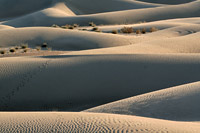
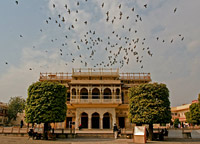
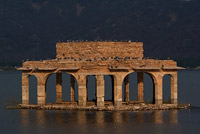
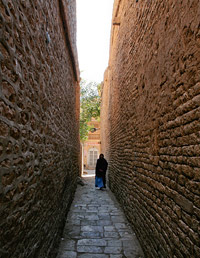
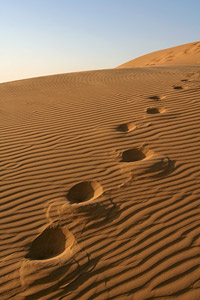
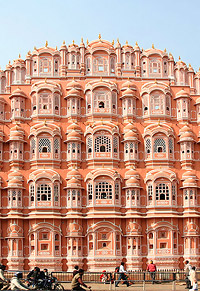
To see full details of the tour and to register, visit Photography Tour to Rajasthan.
Travelling in Rajasthan in February 2008
Jaipur >> Shekhawati >> Pushkar >> Jaisalmer >> Jodhpur
+ Previous: Jaipur City, Amber Fort and Jal Mahal
+ Next: Marwari Language
Previous Posts: Travelogue on visiting Jaipur’s monuments
1. Arriving at Jaipur
2. Seeing Jaipur with Raju
3. Old City (Pink City)
4. City Palace, Jantar Mantar, Hawa Mahal
5. Amber Fort and Jal Mahal
One of the most popular tourist destinations, Jaipur has much to offer to visitors. There is plenty of history in every other building in Old City. There is Rajasthan’s food to savour, most popular being Dal-Bhati-Churma. For the shopaholic tourist, Jaipur is a heaven of souvenirs and handicrafts. If you are there during any festival season, there is plenty of cultural immersion to soak up in.
View Jaipur in a larger map
Map of Jaipur with important places to see
Places to see. See the travelogue links above for more about each of the monuments. City Palace is the most dominating structure in the city, and a must visit. Close to the palace is Jantar Mantar, the astronomical observatory. Not for from these is the well known Hawa Mahal. All these places are in the Old City, also known as pink city due to uniformly painted buildings in this part of Jaipur. Swargsuli is a tall minaret, not so well known and popular with tourists but worth visiting for a bird’s eye view of the old city.

Just outside the boundary of the Old City is the Gaiter Village, which has the cenotaphs of the rulers of Jaipur. It’s another less visited spot, but don’t miss seeing its fine marble structures.
Looming large and visible from anywhere in Old City is Nahargarh Fort, also called Tiger Fort. A restaurant/bar in Nahargarh stays open in the evening and worth a visit. Amber Fort (pronounced Amer) is a large fort on a hill 10kms outside the city – another must visit.

Also worth experiencing is a walk in the Old City where many old buildings have remained, and things have not changed much in many decades. You can also buy puppets(katputli), colorful robes, marble art work and other handicrafts is some parts. Visit some of the gates of the Old City – Chandpol and Ajmer Gate and Sanganer Gate. The fortifying walls of the city have been restored near these gates.
Food and Accommodation. The Rajasthani food to try is Dal-Bhati-Churma. Bhati is roasted wheat balls. In the middle of the desert, the final steps of cooking bhati involves burying it in sand, but they would have some alternatives to this in the restaurants. Chokhi-Dhani, a resort outside the city serves some amazing delicacies that includes Bajra Roti, Bhati and many other local cuisines that will have you drooling. Chokhi-Dhani also has a mock cultural village which unfolds a the rural setup of Rajasthan. Over the years, Chokhi-Dhani also has become a must-see tourist attraction in Jaipur. There are dance shows, puppet shows, cart rides, camel rides and things that you should expect in a village in the desert, all showcased between the walls of the resort. Om Restaurant on Mirrza Ismail Road is another place to go to eat – they have a revolving restaurant at 11th floor where you can sit and see the city unfold as you have lunch.
Being a touristy place, accommodation is plentiful. Ask for a list of home-stays at Rajasthan Tourism Office. Most of the premium hotels and resorts are outside the city and requires some driving. Rajasthan Government has a few mid-range properties in the heart of the town.
There is a lot for shopaholic and souvenir hunter too. There are small shops around City Palace, and near Chandpol. For a more organized shopping, visit the art gallery at City Palace and Rajasthan Government’s Rajasthali Emporium on Mirza Ismail Road. Jaipur is also known for its gems and jewelery industry.
Continued at Marwari Language
Travelling in Rajasthan in February 2008
Jaipur >> Shekhawati >> Pushkar >> Jaisalmer >> Jodhpur
+ Previous: Old City: City Palace, Jantar Mantar and Hawa Mahal
+ Next: Jaipur Information
Close to the City Palace is Iswari Minar Swarg Sal, commonly known as Swarg Suli. Its a tall minaret, almost seven stories high and probably shares the honour for being one of the tallest points in Old City along with Chandra Mahal. I can see it from far off, but finding the entrance to it is an effort. I have to get off the main roads and walk through a narrow, more or less abandoned street. But for a fading handwritten sign on a cardboard sheet that says ‘this way up,’ I would be scrambling up and down the street trying to find my way into the minaret.
I walk up the narrow staircase to the terrace on the first floor where I am greeted by a bored man sitting on a rusting chair, with a folder in his lap and a small bag across his shoulder.
“Is this the way up the minar?” I ask him pointing at a dark ramp that seems to lead nowhere.
“Yes,” he said as he opened his folder, “five rupees, please.” I pay the money and ask him if no one visits the place.
“Not many,” he said as he teared a ticket from the folder, “very few people.”
As I walk up, I am glad there are very few people coming here. Its a dark helical ramp that slowly leads up, with a tiny window in every floor that brings in only a little light. A rush of tourists like in Hawa Mahal or City Palace would result in a stampede, or at least makes few people choke from claustrophobia.
At the top of the minaret is open space with all-round view of the city. Standing up there, I can see the sprawl of Jaipur, the Aravali Hills spreading to the east limiting the growth of Old City, and the plains to the west where the new city is growing quickly. It is easy to spot Hawa Mahal, City Palace and the streets of the Old City I have passed through earlier. And to the North is Nahargarh Fort up on a hill.

Views from the Minaret
In the thirty minutes or so I spent on the top, there were no more than half-a-dozen people walking up to the top. Like most roofs in the Old City, pigeons, not people dominated the minaret.
Although I never made it to Nahargarh looming high to the north and visible from most parts of the old city, I could see its walls spreading all over the hills from the cenotaphs of Rajasthan’s Rulers built at the base of the hill, at Gaitor Village. Located just outside the walls of the Old City under leafy ficus trees, they are one of the finest examples of what can be produced with Rajasthan’s smooth marble stones. Tall Chhatris around the cenotaph, the tombs and roofs are all made with smooth creamy white marbles. There are stories from Mahabharata and Krishna’s playful childhood etched on the walls and around the graves. And in the background on the high hill are walls of Nahargarh meandering along the ridge.

Raju drove me to Amber (pronounced Amer) Fort that afternoon. Going past the old city, the surroundings suddenly change from urban to forested. We climb up a hill on a road surrounded by dense pack of trees that now stand bare in the dry winter. But I can imagine how beautiful and lush green will this winding road going up and down can be, in the rainy days.

Like Naharagarh, Amber too, is up on the top of a hill dominating a ridge. Standing in a valley and surrounded by fortified hills all around me, I am impressed by the majestic effort put by the rulers of Jaipur to protect themselves from possible conflicts. There are fort walls in every angle as I look up, with Amber’s towering structure making everything else look small. A large tank at the base of the hill matches the fort in size adds to the beauty, but there is not much water to see today. After a delicious paratha at a place recommended by Raju, I am ready to take the climb to the fort.

Unfortunately I am in Jaipur in a wrong time, when nearly every monument is going through some stages of restoration. So is Amber Fort. I see bamboo poles stacked up against the wall for painting the outside wall. And inside, I enter into a large open courtyard now partly covered with gravel, cement and other construction material. Fortunately, insides of the fort are untouched and I can explore in peace.
The insides of Amber are evidently royal. Large courtyards, spacious interiors, elaborately decorated walls and marble structure. The king’s prize possession probably was the zanana with dozens of rooms interconnected by a maze of passages. “It is easy to get lost,” said a guidebook and that’s exactly how it turned out with me.

We stop at Jal Mahal on our way back. The Jal Mahal Palace is built in the middle of a lake, and is now left to itself for such a long time that trees have grown over them. The lake’s water is visibly polluted, but nevertheless home to a few wading Black Winged Stilts and a large number of pigeons. We spend the evening near the lake waiting for the sun to go down and the warm day turn into a cold dusk, before heading back to the city.

Continued at Jaipur Information












